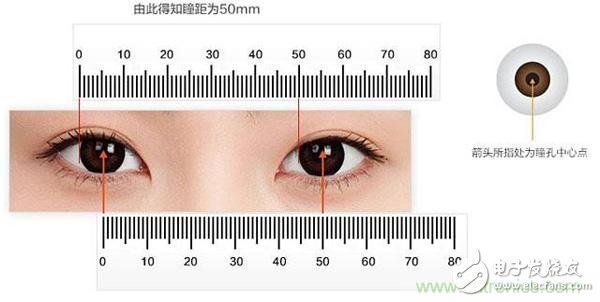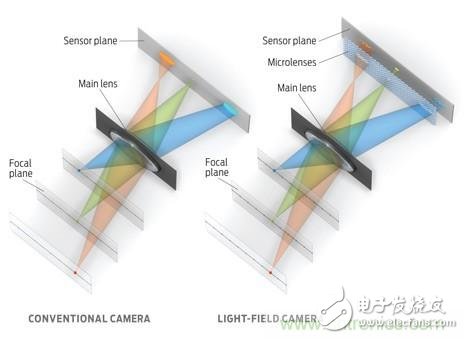With the advent of virtual reality products such as Oculus and VIVE, the VR industry is gradually entering the line of sight. However, even the most advanced VR products are still unable to solve the dizziness problem and become the most serious piece of the last stumbling blocks that hinder the explosion of the virtual reality industry.
Four reasons for VR dizziness:1, VR dizziness principle is actually very simple, because the (VR) picture seen by the eye does not match the (real position) information felt from the vestibular system in the ear, the two kinds of information fight in the head, resulting in dizziness .
For example, when you are sitting on a "VR roller coaster", you are visually in the state of the picture, doing intense high-speed movements, but the vestibular system means that you are not exercising, which will cause dizziness.
2. Another reason is that there is a delay in the movement observed in VR glasses: you swing your head, and the virtual world takes a few seconds to catch your movements.
In a full-view screen such as VR, such delay is the biggest problem causing dizziness.
3, In addition, because each person's interpupillary distance is different, for some people, the human eye pupil center, the lens center, and the center of the picture are not one line, so there is a phenomenon of ghosting. If you look at it for a long time, people will be very dizzy. .
4. Finally, the depth of field is not synchronized, which is one of the reasons for dizziness. For example, in front of you, there is a table, on the table, a cup is placed near, and a doll is placed in the distance. You look at the nearby cup, it is reasonable to say that the distant dolls should be blurred, but now, the distant dolls are also very clear.
In general, VR devices are not realistic enough to simulate reality, and they can't really deceive the brain. The troubled brain is overwhelmed and can cause dizziness.
The solution to the problem of vertigo:1, electric vestibular stimulation
In response to the first dizzy factor, there is currently a company in the world called vMocion, which intends to solve this problem by using the technology of the Aerospace Medicine and Vestibular Research Laboratory of Mayo Medical Center that has spent more than 10 years of research. The technique, called Electric Vestibular Stimulation (GVS), places the electrodes in a strategic position (two electrodes are placed behind each ear, one at the front and one at the back of the neck) to track the perceived motion of the user's inner ear and The motion of the field of view is triggered into a GVS synchronization command that stimulates the generation of three-dimensional motion. If it works, it allows the user to be completely immersed in the current environment, and really feels that the spacecraft he is driving is diving or turning.
2, reduce the delay
An important indicator for purchasing virtual reality devices is the delay from turning the head to rotating the picture. This is currently the most popular part of the technology to reduce dizziness. Studies have shown that head movements and field of view delays can not exceed 20ms, or vertigo will occur.
A delay of 20ms is a very big challenge for VR heads. First, the device needs a sufficiently accurate method to determine the speed, angle and distance of the head rotation, which can be achieved using an inertial gyroscope (responsive but poor precision) or optical method. Then the computer needs to render the picture in time, and the display needs to display the picture in time, all of which need to be completed within 20ms. Correspondingly, if the time displayed in each frame is more than 20ms from the previous frame, then the human eye will also feel the delay. Therefore, the VR head-up screen refresh rate should exceed 50FPS. Currently, 60FPS is a benchmark. But for better results, this refresh rate should be followed up. For example, the Oculus Rift CV1 and HTC Vive currently use a 90hz refresh rate, while the Sony Project Morpheus uses a 120hz refresh rate.
Another way is to reduce the afterglow. The low afterglow display has the meaning of VR head display. The trajectory of the object is closer to the real trajectory of the physical world when the head moves, and there is no smear that can be perceived by a certain refresh rate. . To achieve this goal, current LCD displays are powerless and can only use new displays such as OLEDs. Since each pixel is actively illuminated, the OLED screen can achieve low afterglow. In fact, both Oculus and Valve use AMOLED's low-growth display, while Sony uses its own OLED display.
3, adjust the distance between the lenses

In the original "mobile phone box", everyone did not consider this point. Everyone thinks about how to adapt to different myopia users (some boxes don't even consider this), remember that Samsung should first use the pulley adjustment. The distance between the lenses is designed to freely adjust the distance between the two lenses. In addition, there are also schemes that can adjust the center point of the screen through a Bluetooth controller or the like. Thereby ensuring the center of the screen, the center of the lens, and the center of the human eye at three points. Avoid ghosting and avoid dizziness.
4, light field photography

A light field snapshot can focus, expose, and even adjust the depth of field after the image is acquired. It not only records the sum of all the light rays falling in each photosensitive unit, but the light field camera also aims to determine the intensity and direction of each incoming light. With this information, you can generate not just one, but every possible image that enters the camera's field of view at that moment. For example, photographers often adjust the camera's lens to focus on the face, deliberately blurring the background. Some people want to get a blurred face, the background should be very clear. With light field photography, you can get any effect with the same photo.
Magic Leap, which is currently the best in this area. Instead of displaying the picture on the display, Magic Leap directly projects the entire digital light field onto the user's retina, allowing the user to freely select the focus position according to the human eye's focusing habits. The combination of virtual and real simulates the visual effect of the human eye. There is no need to mention issues such as refresh rate and resolution. Magic Leap solves all the problems in another way.
5, add a virtual reference

Researchers at the University of Computer Graphics at Purdue University discovered last year that as long as a virtual nose is added to the VR scene, problems such as dizziness can be resolved. The researchers tested 41 participants in various virtual scenarios, some with virtual noses and some without. It turns out that people with noses can stay awake for a longer period of time.
The researchers said that the reason for the effect of treatment halo may be because people need a fixed visual reference, so even if you add a car dashboard to the VR, it will produce the same effect.
The problem of dizziness is the most important reason that hinders the explosion of virtual reality. I believe that time will be the master key to solving all problems. I hope that in the near future, we can experience virtual reality without dizziness. It’s good to go to heaven, to the ground, to the sea, to lie at home, and to experience the beauty of everything.
Light Tower,Industrial Light Tower,Portable Lighting Tower,Electric Lighting Tower
Wuxi Doton Power , https://www.dotonpower.com